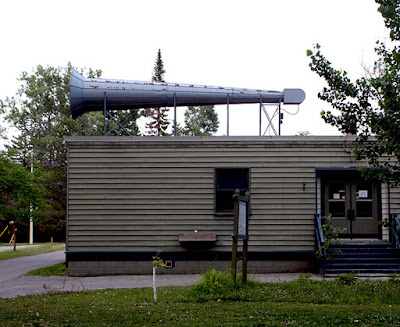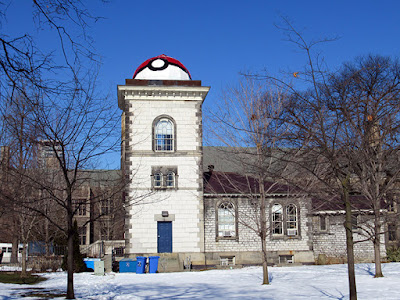Location: Hart House Circle
Date photo taken: 16 February 2017
The Louis B. Stewart Observatory, located in Hart House Circle and home to the University of Toronto's Students' Union, used to be something very different. It even used to be somewhere different. The Royal Magnetic and Meteorological Observatory, considered to be the birthplace of Canadian astronomy, was first built in 1840. Measurements taken there helped determine that sunspots caused fluctuations in the Earth's magnetic field. At the time, it was located to the west of its present spot, close to where Convocation Hall now stands. In 1855 the log building was replaced by this more solid structure, but as early as the 1890s, development around the site was rendering it unsuitable for its original purpose. The use of metal for streetcar tracks and in the construction of modern buildings was interfering with the magnetic instruments, and light pollution eventually posed separate challenges. In 1907 the telescope housed under the dome was moved and the building was donated to the university. It was subsequently torn down but thanks to the efforts of Louis B. Stewart, it was reconstructed in its present location. It would provide a home for a number of different functions over the next 45 years before becoming the home of the Students' Union.
In this photo the dome is painted to resemble a Poke ball. It has become a tradition to re-paint the dome under cover of night. Other treatments include a rainbow, a mushroom from the Mario video games, and a
storm trooper helmet.



